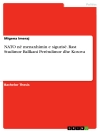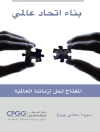This book provides insights into China’s Belt and Road Initiative (BRI) from Asia Pacific and the Middle East. It offers critical perspectives from various directions, not excluding historical investigations, human geography approaches and neo-Marxist inclinations.
China’s Belt and Road Initiative (BRI) represents one of the biggest geopolitical visions since the Cold War and offers the possibilities of an intercontinental vision of Aid politics, along with prospects for pan-Asianism. By and large, any geopolitical vision that purports to foster inter-regional dialogue and materialist development of peoples and economies is bound to have its flaws. The Belt and Road Initiative bears hallmarks of the socio-political tradition of Chinese authoritarian infrastructure politics while also offering a possible alternative to the so-called ‘Washington Consensus’ of free markets, deregulation and a shift towards liberal democracy.
Additionally, the Belt and Road Initiative opens up wide open intellectual spaces for dialogues between Asians, Arabs and Westerners on the meaning of inclusive inter-continental relationships in philosophy, geography and economics. The significance of this is often underplayed in Chinese official statements whereas this book introduces these possibilities within its assorted sections.
“The book is about much more than the material aspects of China’s Belt and Road Initiative. In fact, various chapter authors use the Belt and Road to look at perhaps the most fundamental issue of our times: how does one build a global world order and societies that are inclusive, cohesive and capable of managing interests of all stakeholders as well as political, cultural, ethnic and religious differences in ways that all are recognized without prejudice and/or discrimination?”
—Prof. James Dorsey, S. Rajaratnam School of International Studies, Nanyang Technological University, Singapore
Jadual kandungan
1. Critical Perspectives from Outside China on the Belt and
Road Initiative: An Introduction.- Part I Imagining the Silk Roads Through Philosophy and History.- 2. Squaring the Circle: China’s “Belt and Road Initiative” (BRI) and the Ancient Silk Roads.- 3. Mercantile Harmony: The Ancient Silk Roads as Intercultural Meeting Points Amongst Monks, Pilgrims and Merchants.- Part II Critical Geographies on the Road.- 4. The Belt and Road and the World: Why China’s “One Belt, One Road” Initiative Is a Dilemma for Everyone.- 5. Infrastructure Construction as Empire Consolidation in Chinese History.- 6. Rail Developments Under the BRI.- Part III Critical Political Economy on the Road.- 7. The Belt and Road Initiative and China’s Relations with Iran and Saudi Arabia: A Delicate Balancing Act.- 8. Australia and China’s Belt and Road Initiative: Economic Opportunities and Geo-Strategic Concerns.- 9. Legal Challenges to the Belt and Road Initiative.- 10. Is the Economic Hegemony Moving From the United
States to China?: A Historical Perspective.- 11. China’s Belt and Road Initiative: China’s Motivations and Its Impacts On Developing Countries.- Part IV Critical National Perspectives.- 12. US Attitudes and Reactions Towards China’s “Belt and Road” Initiative.- 13. China’s Belt and Road Initiative (BRI): Challenges
and Opportunities for Vietnam.- 14. Conclusion.
Mengenai Pengarang
Alan Chong is Associate Professor at the Centre for Multilateralism Studies, S. Rajaratnam School of International Studies in Singapore. He has published widely on the notion of soft power and the role of ideas in constructing the international relations of Singapore and Asia.
Pham Quang Minh is Professor of History and Politics at the University of Social Sciences and Humanities (USSH), Vietnam National University-Hanoi. His main teaching and research interests, among the other things, are world politics, international relations of Asia-Pacific, and Vietnam’s foreign policy.












